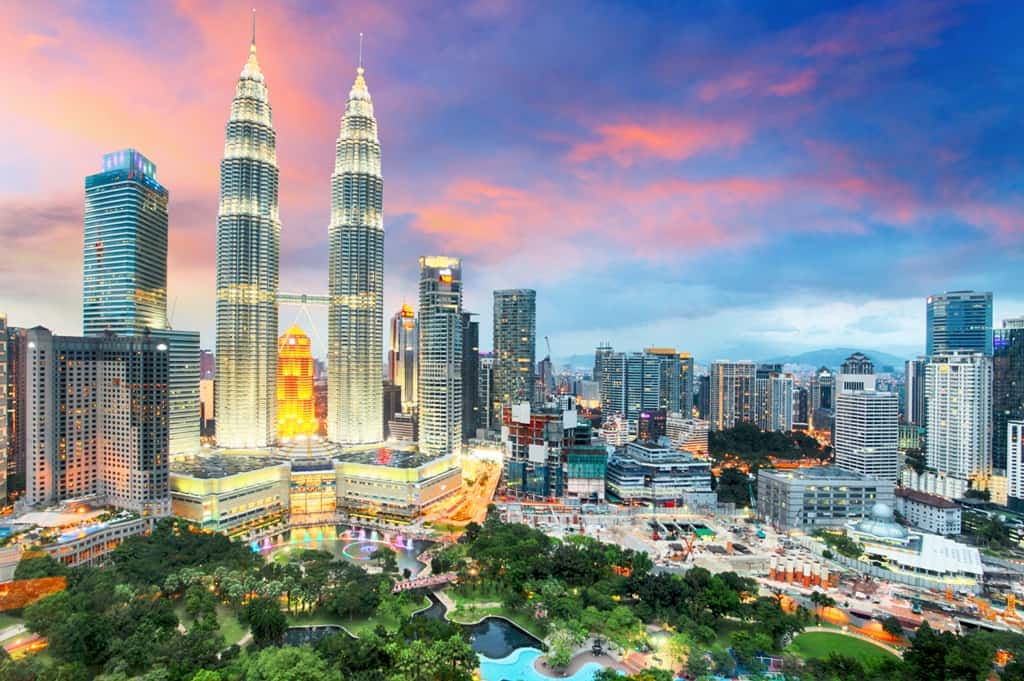Planning to spend 2 days in Kuala Lumpur? This guide will help you plan the perfect 2-day itinerary.
Kuala Lumpur, or just „KL” as all the locals call their city, is the big surprise of South-Asia. Compared to Bangkok, a big favorite of travelers, it is the complete opposite. The Malaysian capital is a hyper-modern, clean (except Chinatown and Little India) and green city. All in all, a place you could imagine living. Less known, but Kuala Lumpur has a majority Muslim population. But KL is quite liberal, which makes it extremely popular among people from the Middle East.
Kuala Lumpur and Malaysia are unique for being a melting pot of three ethnic groups: Malays, Chinese, and Indians. It is what everybody loves in KL: the diversity of culture, cuisine, and religions. Sikh, Hindu, Muslim, Buddhist, Taoist communities all respect each other. Malaysia likes boosting the peaceful cohabitation of the different ethnic groups.
Malays make up 46%, Chinese 43%, Indians 10% of the KL population. Malays are Muslims, which means that there are some restrictions. Malay restaurants do not sell alcohol, but you can get it at the Chinese or Indian. There are no dress codes for foreigners, but locals often wear the „tudung”, the local headscarf, and dress modestly.
Since the 1990s, Malaysia has experienced an incomparable economic boom in the region that changed the capital’s landscape. Star architects created stunning skyscrapers keeping in mind the Islamic tradition as well. But if you look for ancient monuments, then KL may not be the best choice. It only has a 150-year old history.
This is a guest post by Agi of Voice of Guides!
Disclaimer: This post contains affiliate links. This means that should you click on certain links, and then subsequently purchase a product, I will receive a small commission.
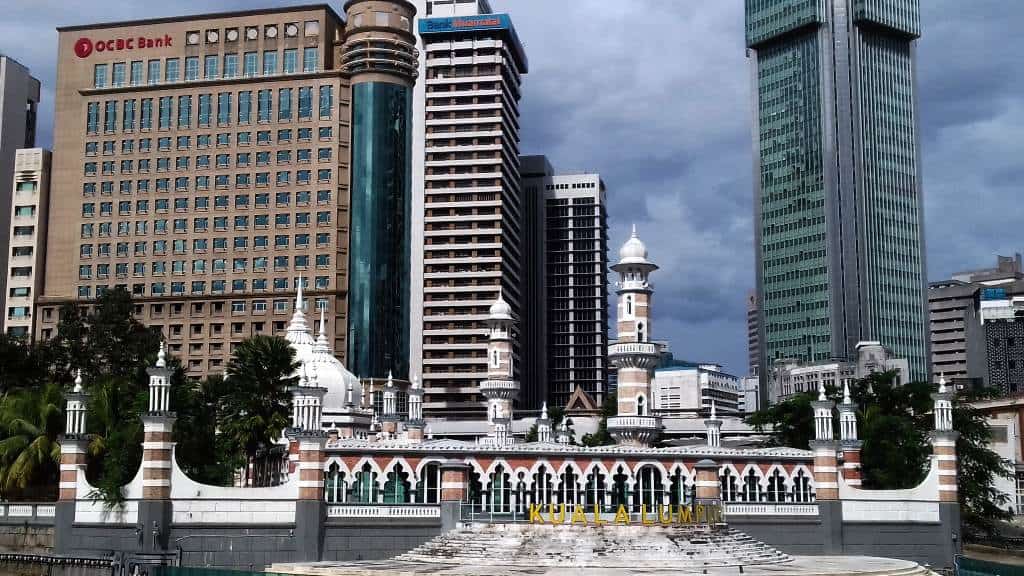
Table of Contents
Two Days In Kuala Lumpur: Where To Stay.
Hotel Royale Chulan is a top choice in the center of KL. I love that place. It is not a multi-story glass structure, but a traditional Malaysian mansion. The shiny lobby even has a small garden with a waterfall and several sofas Bukit Bintang, the lively shopping street and hub of nightlife, is just a 5 minutes walk away, while the Petronas towers are 20 minutes from here.
There is a large pool on the second floor. The guests used to have a glimpse of the Petronas towers while swimming, but unfortunately, the rapid constructions deprive them of the view now. This is a favorite spot of the Malaysian sultans and high-scale events, but the price is still surprisingly reasonable. Click here for more information and to check the latest prices.
Hotel Ibis City Centre has even a better location closer to the Petronas towers. The Ibis chain is usually known for being a budget hotel but without a charm. But the one in KL is a great experience. It has a cozy lobby, a restaurant, a bar, and a small pool on the top floor with a stunning panorama. The rooms are not huge but charming and have a direct view of the Petronas. Click here for more information and to check the latest prices.
Hotel Mandarin Oriental has excellent guest feedbacks especially because of the great staff and perfect location. It is just one minute from the Surya KLCC and the Petronas towers. Click here for more information and check the latest prices.
How to spend 2 days in Kuala Lumpur, a Detailed Itinerary
Kuala Lumpur in 2 Days: Day One
Petronas towers, the landmark of Kuala Lumpur
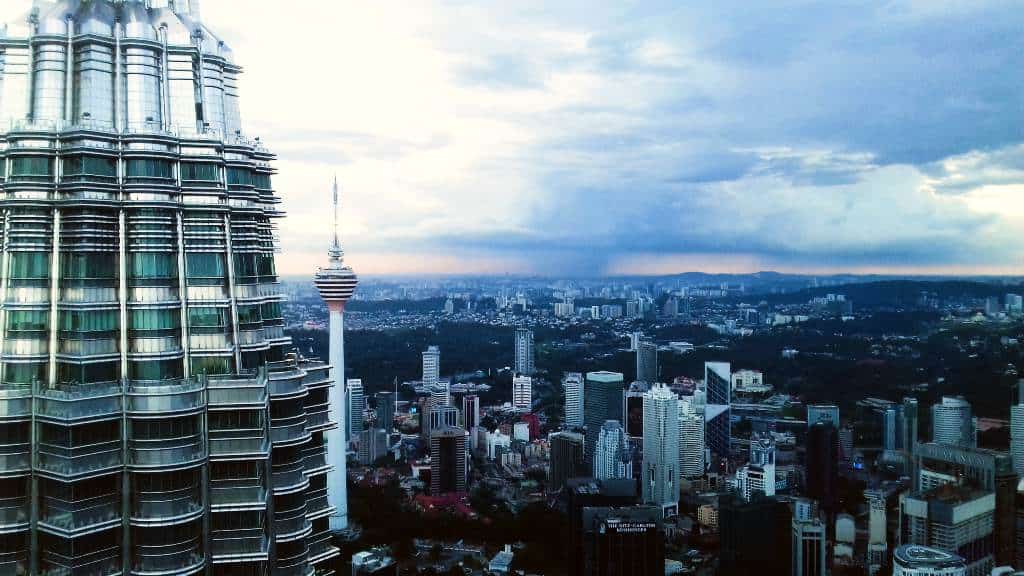
No visit is complete in KL without the 452-meter-high Petronas towers. It was the highest building in the world for seven years but still holds the record as the tallest twin tower. The structure of 88 floors is an engineering masterpiece built with the deepest foundation (120m) in the world.
You cannot stop watching it, especially at night when it shines like a diamond. For security reasons, a two-story steel sky bridge connects the two towers at 172 meters altitude.
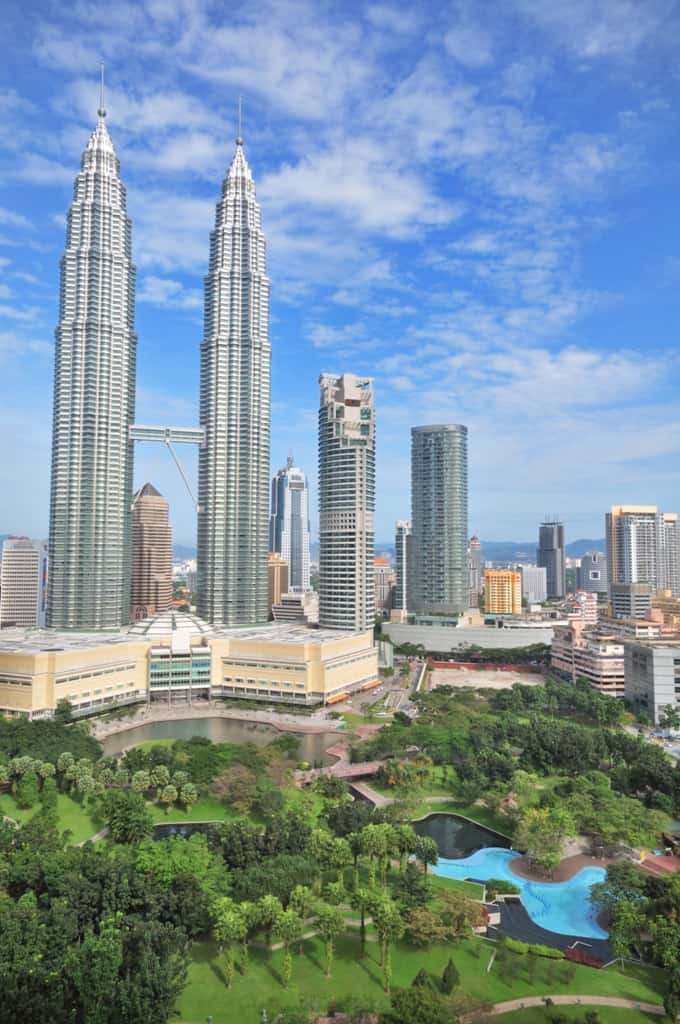
The number of tickets sold daily is limited to 1000. You can only buy at the counter inside the Surya KLCC shopping mall attached to the tower on the day of the visit. They open at 8.30 am every day, but visitors start to queue much earlier to get a ticket. If you are flexible with the time slot, there should not be a problem to go even a bit later.
But if you insist on a specific time (sunset is recommended by the locals), then you should go early. Once you have your ticket, you must arrive a maximum of 15 minutes before the time you booked as there is a security check. First, they take the visitors to the sky bridge and then to the 86th floor (370m)!
From there, you have a stunning view of KL, and you can see both the Petronas and KL tower together. Once you are there, stay for the evening fountain and light show at 8 pm and 9 pm.
December and January are usually foggy, and the weather clears up later. During this time, do not book for the morning.
Click here for more information and to buy your skip-the-line tickets.
Visit the National Museum
Right next to the KL Sentral traffic hub stands the National Museum, which I highly recommend. It has four sections, each dedicated to a certain part of Malaysian history: the ancient times, the Early Kingdoms, the British rule, and the road to independence until today, including the latest economic achievements.
The whole arrangement is fascinating. You get a good understanding of the country, and it is a perfect way to get to know the local identity.
The Royal palace (Istana Negara)
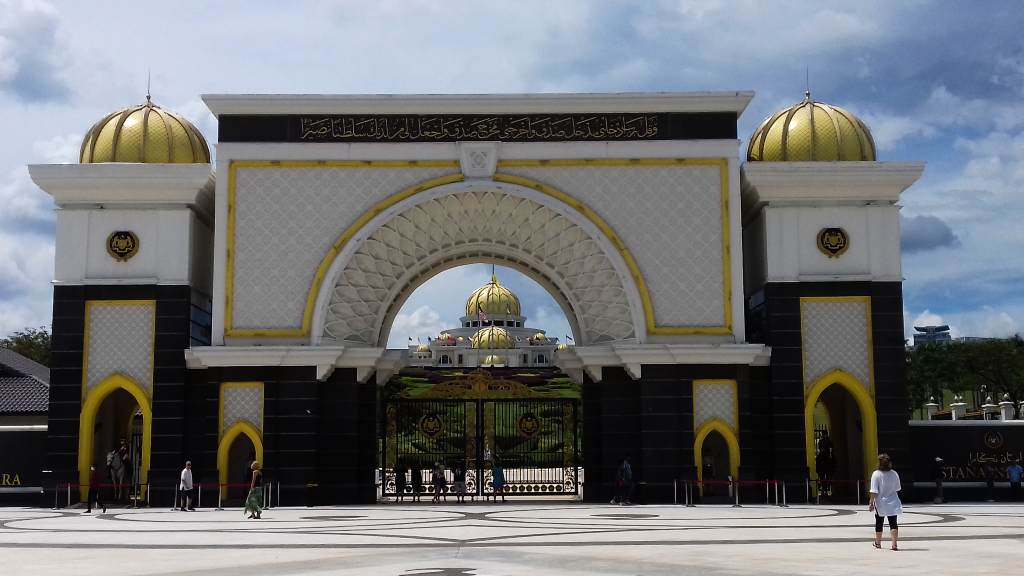
The royal residence is not open to the public, but it is worth taking a photo from the guarded gates. Malaysia has a unique constitutional monarchy. Out of 13 states, 9 have a king or sultan. These nine rulers decide every five years who becomes the king of Malaysia (Yang di-Pertuan Agong).
The current king, Sultan Abdullah of Pahang state, got into this position unexpectedly in 2019 as Sultan Muhammad V of Kelantan state abdicated for the first time in history.
The new royal residence, inaugurated in 2011, stands on a small hill in the center of a vast green park with a golf course, tennis, and badminton court. The guards in traditional attire, „sarong” let the visitors take photos with them.
The National Monument
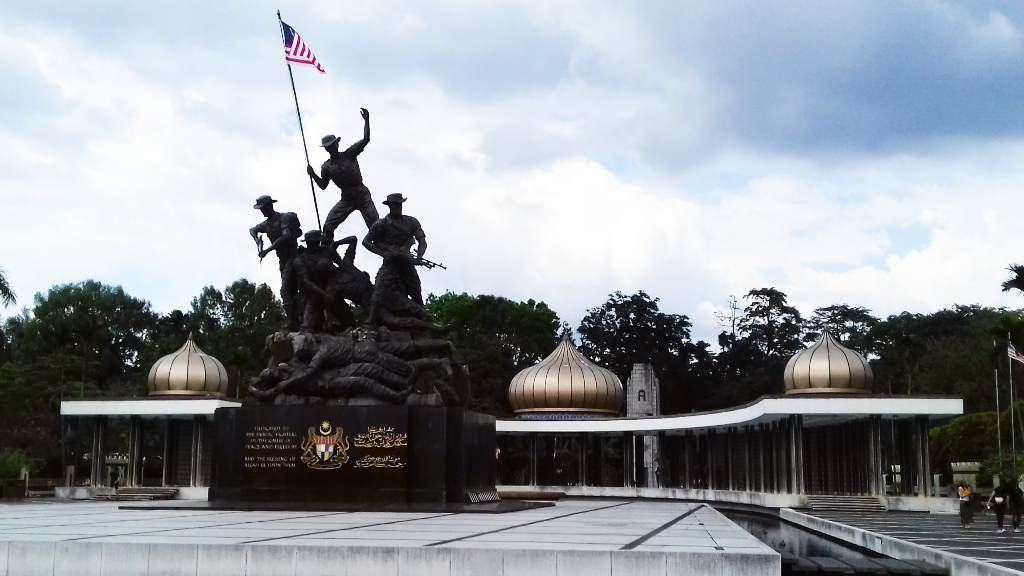
After the royal palace, head to the National Monument, the impressive 26-ton bronze structure. Seven Malaysian soldiers hold the Malaysian flag high in the air. The two men lying at their feet represent the enemy.
The monument symbolizes the victory of democracy and honors the 11.000 heroes who lost their lives during the first and second world war under Japanese rule and the state of emergency (1948-1960) against the communists.
(The National Museum is a great place to learn more about this specific period where the Malays allied with the British to end the communist terror). A pool and a sculpture garden are also part of the complex.
The KL bird park
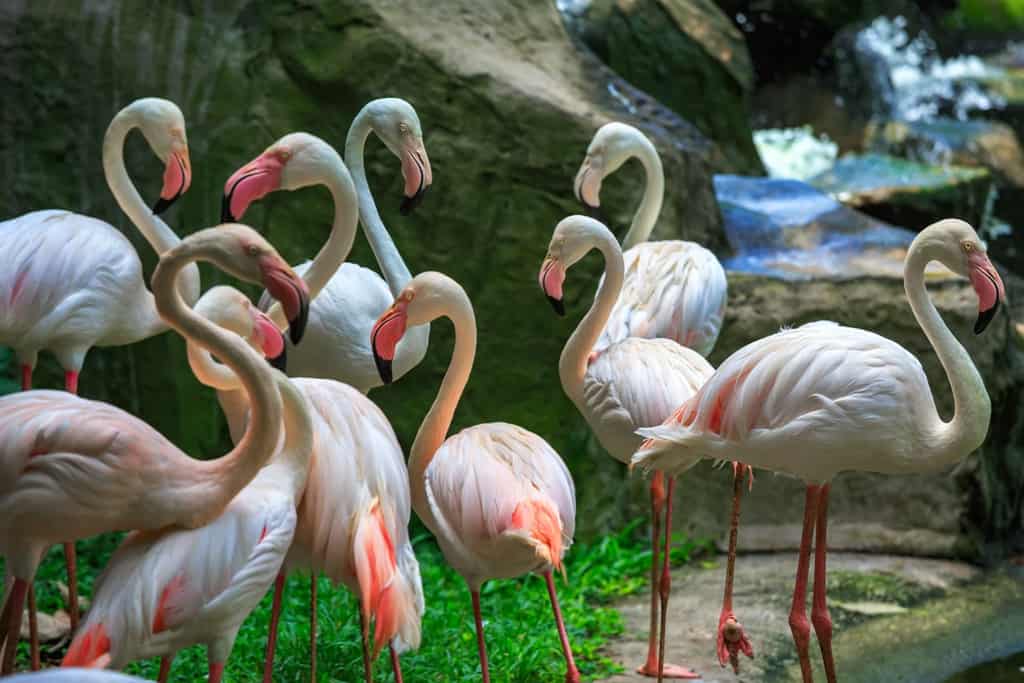
You do not have to be a bird fan to love this place. The world’s largest public aviary is a small paradise in the very center of KL. Three thousand birds, including peacocks, herons, and pelicans are roaming right at your feet. The hornbill and flamingos are one of the big attractions. Another great thing about KL is that you get a good mix of monuments and nature in the metropolis.
National mosque
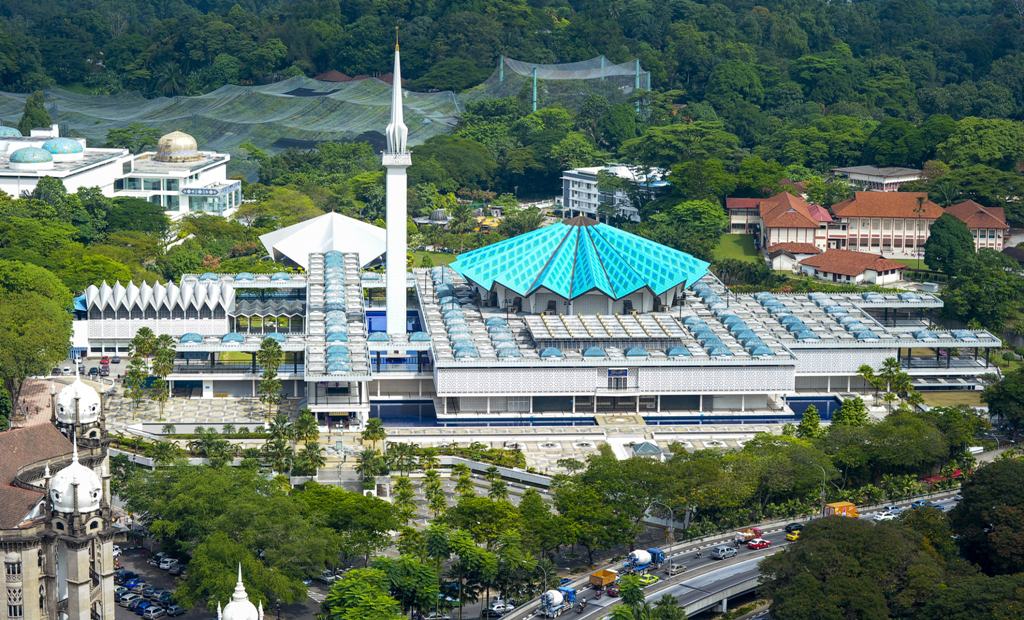
You can easily recognize the National Mosque by its blue-green roof that looks like a half-closed umbrella. It is probably not the most memorable mosque, but it is the principal place of Friday prayings in KL. They started the construction of the new mosque after the independence as the symbol of the new Malaysia.
The visiting time for foreigners is pretty limited. It is closed during praying times, which varies every day. At the entrance, women get a gown that they must wear regardless of how they are dressed. During the Friday prayers, it becomes very chaotic with countless cars and motorbikes parked around.
Independence Square (Dataran Merdeka)
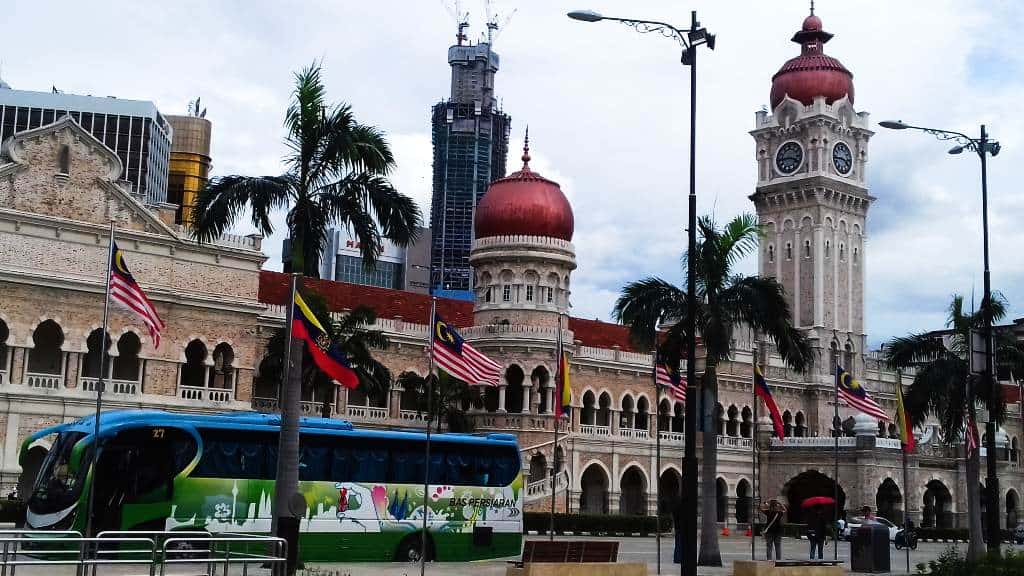
The expansive square surrounded by attractive historic buildings is a vital place for Malaysian history. The Malaysian flag was hauled up on the 31st August 1957 for the first time ending the foreign occupation. The vast green field was the cricket ground of the British officials. The 100-meter high flag pole in the center is the 6th highest in the world.
The Sultan Abdul Samad building created in traditional Mughal style with the clocktower is the most attractive house along the square.
Continue on foot behind the building along the river to take stunning photos of the Jameq mosque at the confluence.
The Central Market and Petaling Street
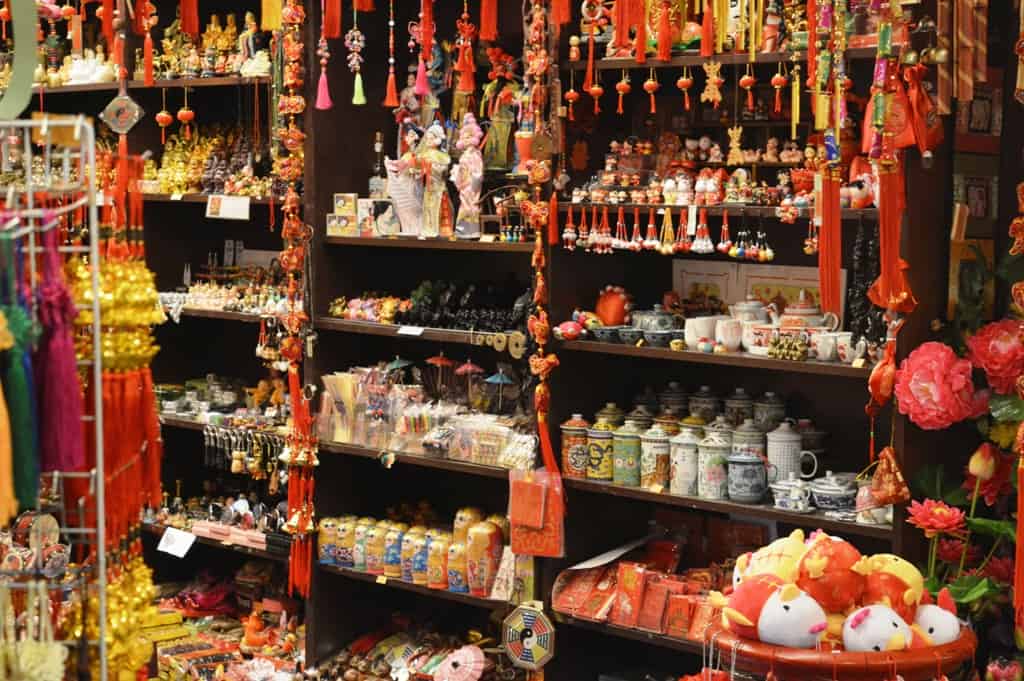
The Central Market, once a „wet market” where vegetables and fish were on sale, is now declared as a cultural heritage. Today, it is a perfect shopping place for Malaysian, Chinese, and Indian handicrafts, textile and „kris” (famous Malaysian dagger). You can find everything here. There are some cafés and a food court as well to have a break at lunchtime.
Kuala Lumpur in 2 Days: Day Two
Batu Caves, the Hindu pilgrimage site
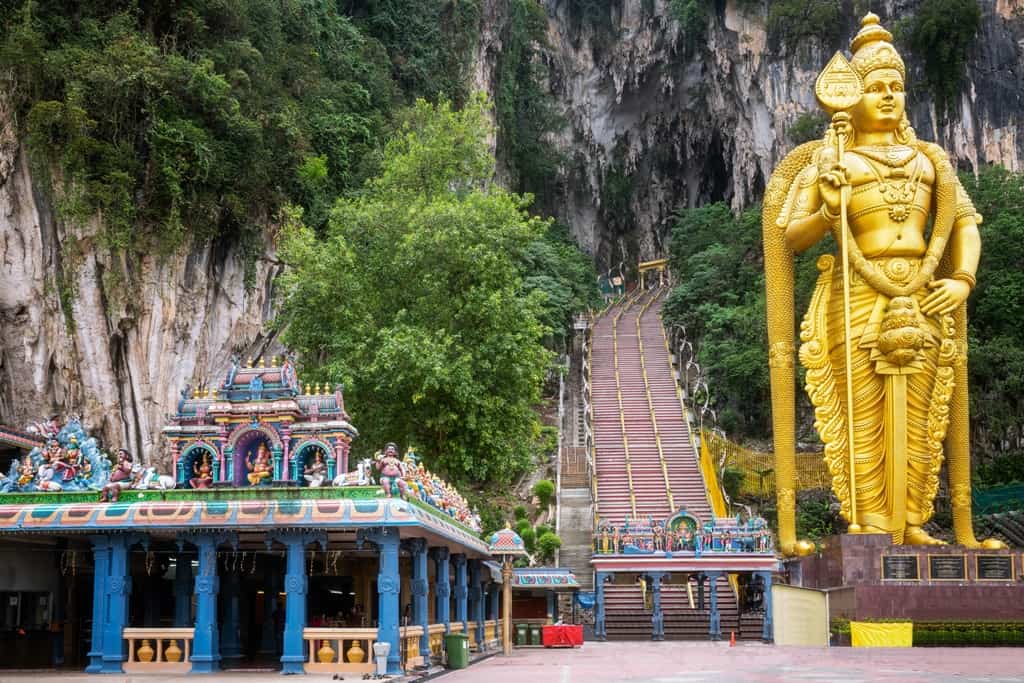
It is the most sacred place for Hindus in Malaysia, like Varanasi in India. Head to the Batu Caves in the morning before it gets too hot. The Batu Caves are carved into the limestone mountain 13 km north of the Malaysian capital.
The main cave serves as a Hindu temple dedicated to Lord Muruga Hindu God. The 272 colorful stairs with the 42-meter gold-painted statue look stunning. But you only appreciate the visit to the Batu Caves if you know about the Thaipusam festival that takes place here sometime between mid-January and mid-February (the exact date differs every year).
Devotees march from KL to the Batu Caves for 8 hours carrying various sacrificial items as an offering to Lord Murugan on this day. Some take 1-2 liters of milk in an aluminum pot on their shoulders or their heads.
Others put piercings in their tongues and faces or drive hooks in their backs with fruit or milk hanging at the tip of them. They are in a state of ecstasy, and strangely, not a single drop of blood is seen.
Click here for more information and to book a tour to Batu Caves.
Putrajaya, the brand new city
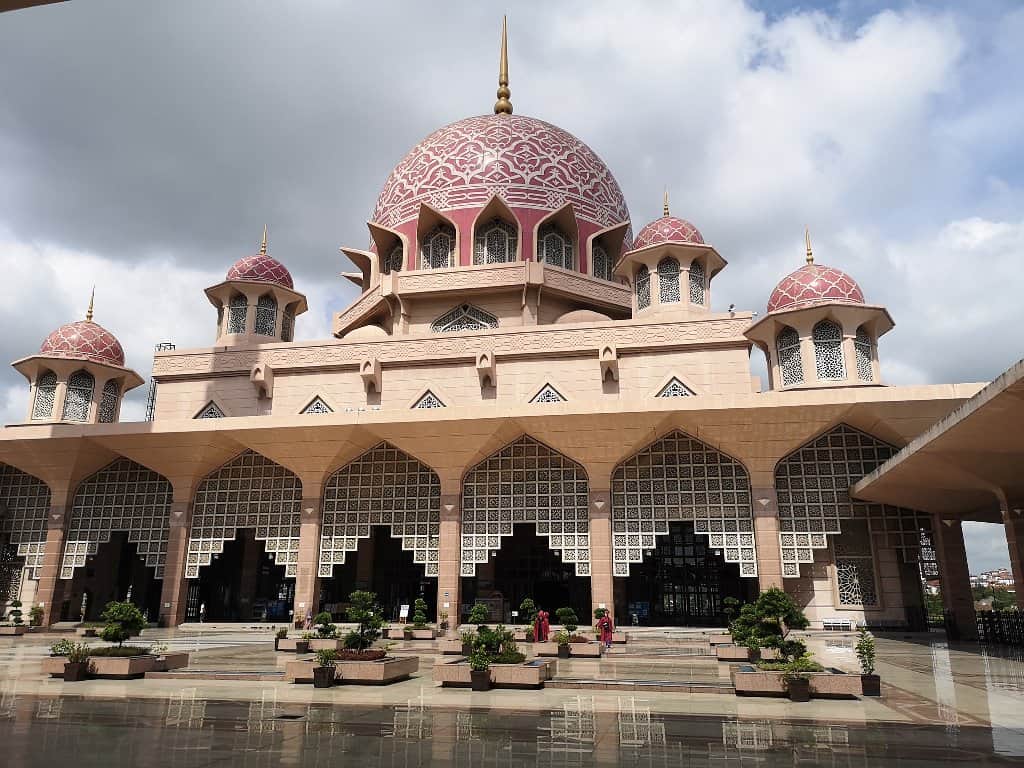
In the second half of the day, you can take a tour to the administrative capital, Putrajaya, located halfway between KL and the airport. The idea was to move all the ministries and governing buildings to one high-tech city in a green environment. The Prime Minister’s official seat and the Putra mosque are jaw-dropping.
You might be interested in this full-day Kuala Lumpur tour that includes the city’s highlights, a visit to Batu Caves, and Putrajaya.
Kampung Baru
In the evening, head to Kampung Baru, the traditional Malay village with wooden stilt houses with banana and coconut trees at the feet of skyscrapers. Do not miss the night market if you are in KL on a Saturday with food stalls and all kinds of souvenirs.
Dinner at the KL Tower
You can top your stay in KL with a dinner in the revolving restaurant of the 7th tallest freestanding tower in the world, the KL tower. The choice of the dinner buffet is indescribable, let alone the panorama of the city in lights. Click here to check the prices and book your dinner
Practical Information For Your 2-Day Kuala Lumpur Itinerary
When is the best time to visit Kuala Lumpur?
KL has a tropical climate. It means that the temperature stays between 28-32 °C. There is no monsoon season, but it can rain heavily anytime. It is a pleasant delight indeed, as the rain freshens up the otherwise heavy humid air that makes you sweat the whole day. You cannot go wrong with the weather whenever you go to KL, but you need the umbrella at some point. December and January are foggy for a couple of hours in the morning.
How to get from the Airport to the City Center
The Kuala Lumpur International Airport (KLIA) is 55 km from the capital. You have several options to get into the city.
Train: The fastest way is to catch the KLIA Express non-stop train service (55 MYR). It takes only 28 minutes to the center. There is a transit train as well that has some extra stops along the route.
Bus: The cheapest option is to take a bus (10 MYR) and takes one hour to KL Sentral (6:30-12:30).
Taxi: Airport taxi 60 MYR (15 USD), luxurious taxi 100 MYR (25 USD) and GrabCar are popular and cheaper options. You need to download the App.
If you plan to use public transport frequently, then a Touch ‘n Go (TnG) card for a 10 MYR credit is the best option. Then you can pre-load it at the same time with a minimum of 10 MYR at the kiosks or the stations.
Mass Rapid Transit (MRT). It runs through Kuala Lumpur city center, providing direct access to tourist spots such as the National Museum and Central Market.
Go KL City Bus: It’s a free city bus service with already eight routes covering most of the major tourist spots, including Bukit Bintang, Chinatown, and KLCC. It is hard to miss the pink buses that you can board at any of their stops. You can check out the routes here.
Monorail: The monorail is a great experience and practical as it connects the commercial hubs with some touristic areas, like Bukit Bintang.
KTM Komuter train: This is the cheapest and only public transport that goes to the Batu Caves from KL Sentral. Otherwise, you need to join a group or take a taxi.
Why You Should Visit Kuala Lumpur
If you look for a cleaner, tidier, and less chaotic metropolis without mass tourism in Southeast Asia, then Kuala Lumpur is your best choice. Besides, there is no other place with such cultural diversity. Despite being a majority Mulsim city, the nightlife is fantastic. And KL is not only the Petronas towers. There is a lot more to do.
Bio: I’m an international tour guide who traveled through Malaysia several times. I have a strong interest in less touristic countries. In my blog, Voice of Guides, I try to give you deeper information about countries that are misrepresented or get less attention from the media. Apart from practical tips, my purpose is to show what is behind the scenes. Because I want you not only to visit different places but also to understand them.

